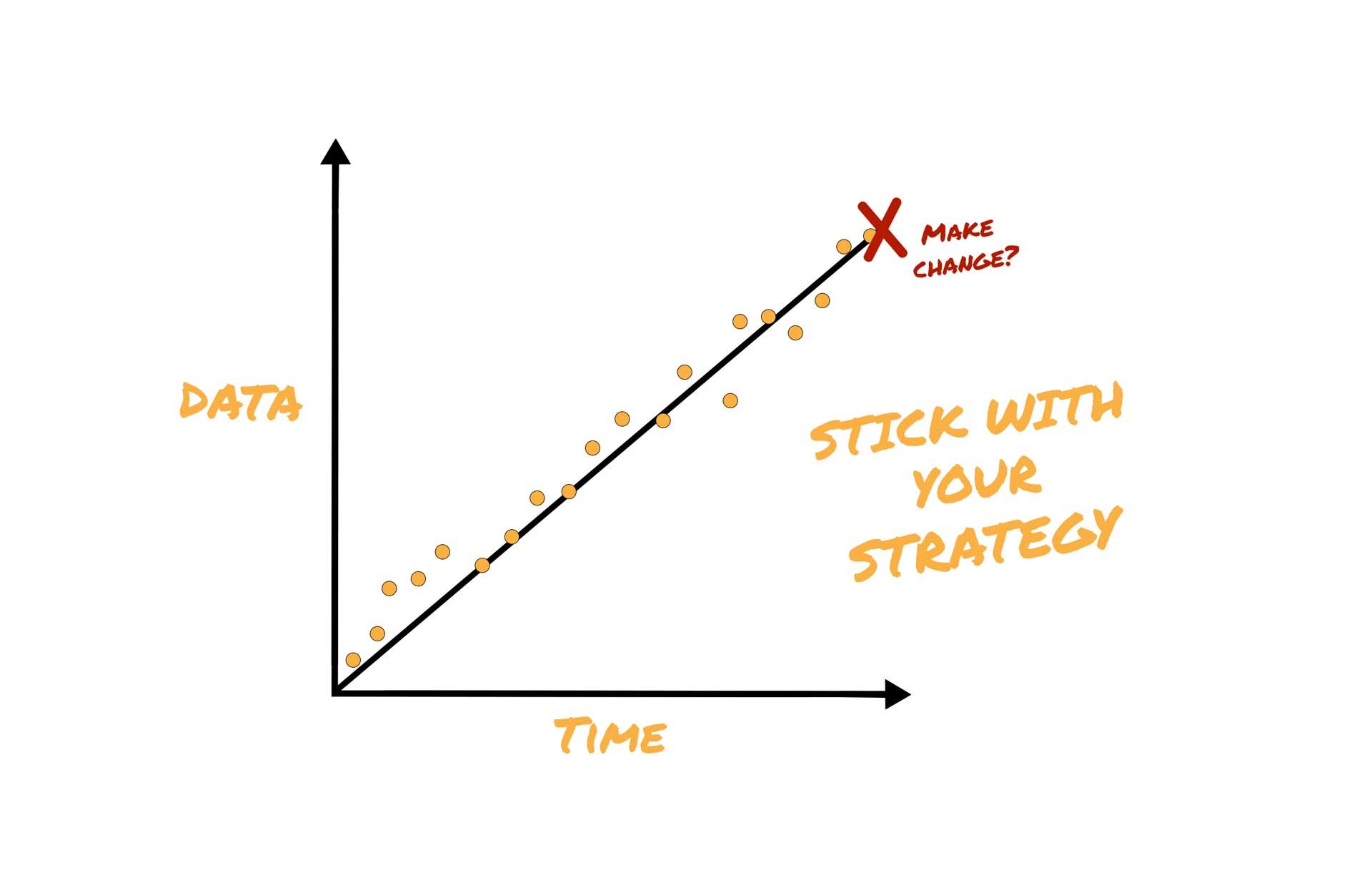The Truth Is in the Trend
Have you ever put yourself on an eating or exercise plan to lose some weight and get healthier? Typically, we set a goal and determine our strategy to achieve our goal. It probably has some benchmarks and
a timeline. Then you begin your weight loss journey, which probably involves stepping on the scale each day.
On the days when the scale says you are down a pound, you feel like your plan is working. On the days the scale says you’ve gained a pound or two you question the plan and whether you should stick with it or change to another approach. That is how we lead our organizations and teams sometimes.
When we get positive short-term results, we feel like our plan is
good and will render the long-term results we are looking for. When we receive negative short-term results, we question the plan and consider shifting or scrapping the plan altogether. This can have far greater repercussions. The constant shift in strategy can cause a loss of momentum, internal stress and creates a loss of trust. A culture has been created where your team doesn’t commit to strategies because they know at some point, you will shift to another one.
So as leaders, how do we avoid this trap?
How do we know when to stay the course or shift the strategy?
The answer is in the Trend Line.
The trend line is the shape of your success. It shows your true trajectory and whether you will achieve or fall short of your target. You can look at the snapshot data every day, but until you form it into a trend line, you won’t know if you are on your way to victory or in a downward spiral to failure.
1. Zoom in
We need to gather the particulars. To understand something, you need to get closer to it. What do we know about our results so far? What historical and current data do we have? Take a deep dive into the data. Your goal here is to gather and examine the data (facts).
Determine the key metrics to be tracked regularly (attendance, first-time guests, engagement, giving, volunteer retention, group participation, etc.).
Make a plan to start tracking data points.
House ALL current and historical data in a single source.
2. Zoom out
Now that you have been down in the details, you need to get perspective. We do that by taking the data points you have gathered and plotting them out on a spreadsheet, app, or even a piece of paper. Relative to the goal, determine if you need to plot your data week over week, month over month, quarter over quarter, or year over year. To understand trends and trajectory, you have to compare results over time compared to the previous same period. Now you can analyze the trend to discover your actual state.
Establish a dashboard/report that displays key metrics over time.
Consider the type of analysis for key metrics to determine health (Month to month, Year over year).
Set a rhythm for reviewing results to inform decision-making (quarterly evaluations, annual strategic planning, etc.).
3. Fix your focus
Now that you know your actual current state, trend, and trajectory, you must decide if you are going to: (pick ONE)
A. Stick with your Strategy | Progress is trending up and in line with healthy targets.
B. Make Small Tweaks | Some success is seen, but adjusting variables will produce greater results.
C. Implement Sweeping Changes | Results are falling significantly short of our goals, a new strategy needs to be deployed.
Your peace comes now from moving forward in facts vs. feelings.
“Commit your work to the LORD, and your plans will be established.”
Proverbs 16:3
4. Implement the change
If you were feeling uneasy about progress, others were too. Communicate your findings, even if you are sticking with your strategy or only making minor tweaks. Share the peace you now have and the trend line that got you there. Be honest with the team about where we have been and the need for change, and give them time to process.
Set a meeting to discuss data, analysis, and proposed response plan.
Brainstorm and collaborate to develop a new game plan as a team.
Allow the responsible leaders to drive the solution up, with their team “at the wheel.”
Develop an implementation plan that is appropriate for the level of change. As you move into implementation, set up a rhythm of evaluation and adjustment to keep you on track. Keep your eyes on the trend line!
Consider all relevant stakeholders that will be affected or need to be included.
Establish clear goals and benchmarks.
Determine a timeline for implementation that allows for healthy adoption of the change.
Decide when you will review the new trend in light of the updated strategy (e.g. 30 days, 60 days, 90 days).






